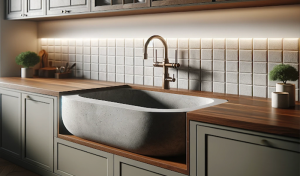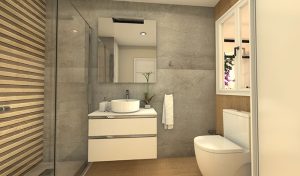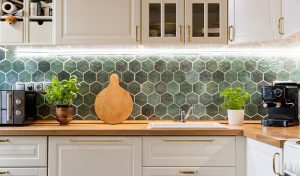Did you know cabinets are the least paid attention to in the kitchen? Cleaning cabinets are just as important as cleaning sinks, counters, and floors. However, when ensuring your cabinets are appropriately cleaned, there are some do’s and don’ts to consider. Discover those in today’s blog.
Cleaning Do’s
1. DO use a gentle cleanser.
When cleaning cabinets, you must use a gentle cleanser. Just like not cleaning the cabinets can damage the wood, so can abrasive cleaners and harsh scrubbing. Instead, prepare a homemade cleaner with one part mild dishwashing soap and two parts hot water, or using vinegar and hot water using the same ratio. Combine the soap and water into a spray bottle and get cleaning!
2. DO use a toothbrush to get into tight spots.
When a rag or sponge can’t get into deep grooves of ornate cabinets, using a toothbrush to dip into the cleaning solution allows you to gently clean the hard-to-reach areas. The cabinet handles or knobs and the cabinet door edges should get special attention.
3. DO rinse the cleaner off.
When your cabinets are cleaned, ensure all the cleanser is rinsed off with lightly damp warm water; this gets rid of any residue left behind. Work from top to bottom to remove any drips.
4. DO dry the cabinets after cleaning.
It’s essential to dry off cabinets since leaving them to air dry can damage or bubble the finish or paint. A soft cloth is best to dry off any damp surfaces and allow the shine to come through.
5. DO use baking soda to tackle tough areas.
Sometimes, stains or hard-to-remove food particles and grease can be hard to remove with just soap. Using one part baking soda and two parts water as a paste on these spots is a good extra step. Leave it on for a few minutes and then wipe with a damp cloth, gently rubbing until the stain is gone. Dampen the cloth and re-wipe the spot. Dry with a microfiber cloth or soft rag.
Cleaning Don’ts
1. DON’T soak your cabinets.
Too much water on your cabinets can damage the paint or finish, so take care not to soak your cabinets. Spray the cleaning surface onto a microfiber cloth or soft rag, so it’s damp. Wipe from top to bottom and ensure any trim or molding to get rid of dust and grime. Get inside the cabinet doors and the handles and knobs. Don’t let the cloth get too wet to drip, and squeeze out any excess.
2. DON’T allow water to run into the hinges.
The cleaning solution is safe for your cabinet surfaces; however, it’s not intended for the cabinet’s hinges. Use a microfiber cloth to wipe away any dust and grime from the metal.
3. DON’T forget the glass.
If your cabinets contain glass inlets, use the vinegar mixture with a clean cloth. Wipe the glass thoroughly on both sides. Don’t use abrasive cleaners on the glass and wipe dry once they’re cleaned.
Consider NEW Kitchen Cabinets
If your cabinets are due for a replacement, we’d love to speak with you about your options. Contact Mountain States Kitchen and Bath to learn more about our quality cabinets. We install new cabinets in Utah and Salt Lake Counties.









